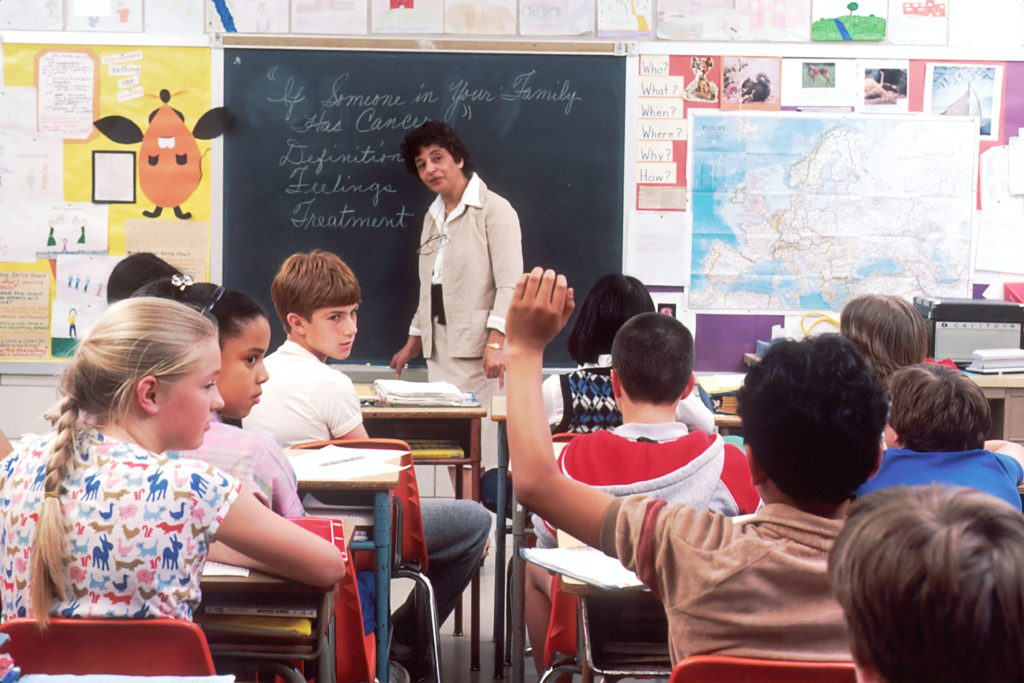
As we move to a new decade, we must leave behind the old yellow-stained duplicated (ditto) workbooks and the reading textbook with four comprehension questions and one synthesis question. School competition is a fact of life, and if your high school produces several scholars that earn ACT scores that are in the 30s, your school is in high demand. What do those schools know that other schools don’t know? They understand that education is a living organism and that it is forever changing. Earlier this year, while preparing for my evaluation, I was on the Columbus City Schools website, reading learning targets. I stumbled on a print that was titled “Traditional Classroom vs Standard-Based Classroom”. I read the two lists that were provided, and I realized that I was a traditional teacher. Now, what was I going to do about it, and how could I develop to become a standard-based teacher?
Qualities of a Traditional Classroom

In the traditional classroom, the teacher relies heavily on the textbook when planning instruction and provides a test at the end of the unit. The lesson focus is teacher-directed and on the teacher’s instruction and performance. The teacher is doing the thinking and working, while students sit passively in the class, ready to be entertained. I can recall one teacher repeating that she was an entertainer, not a teacher. Unfortunately, she had not heard of standard-based teaching. In a traditional classroom, teachers collect grades and use them as a final grade. There is rarely any opportunity for feedback or revision. This was the norm for many teachers that began before the 21st century. I can remember attending a textbook professional development session to learn how to use the ten-pound textbook, with countless supplements and C.D.s. I was happy to learn all about the textbook and its supplements; that was over a decade ago. I was on a team to pilot a new textbook for language arts. The new textbook focused more on nonfiction text and limited supplements. Even with the new textbook, I relied heavily on it when I was not teaching a novel.
My lessons were organized the same way every day. I posted an agenda on the board that included bellwork, a pre-reading activity, reading of the text, a group project, an after-reading activity, and a test at the end of the unit. I used a book I received while earning my master’s degree to create reading activities, and I did not deviate from my system. It worked until I began working at my current school.
Qualities of a Standard-Based Classroom

A standard-based classroom begins with a learning target, not a lesson objective, but a learning target. The learning target states what the student will learn and how they show mastery. I have written extensively about learning targets here on the blog. The teacher assesses students throughout the lesson, not just at the end of the unit or story. Assessments include observations, questions/cues, and exit slips. The focus is no longer teacher-directed but on what the students will learn and the type of thinking will they be engaged in. Instruction leads to students being engaged in learning and showing mastery of the learning targets. There are ongoing feedback and opportunities for corrections. The teacher monitors and adjusts their instruction before continuing to the next lesson. Overall, in the standard-based classroom, student mastery is the focus instead of teacher instruction.
The standard-based classroom sounds and looks different. The teacher may use the gradual release responsibility model; my school district calls it the “Dayton Way”. The teacher teaches a mini-lesson, then the teacher leads a guided instruction lesson, and finally, the student works independently or in small groups. You may view a teacher teaching a mini-lesson and then instructing the students to perform a think-pair-share with an elbow partner. Students may also practice the task with a partner, and afterward, students may have to demonstrate their knowledge on an exit slip. Every step of the gradual release responsibility model has a purpose, and the think-pair-share is not a time to talk off-topic but a time to discuss the lesson and gain clarity from a fellow classmate. Using a timer will also keep students on task. I discuss using a timer within my classes on this blog post here. Using this teaching method produces students that work independently and think critically .
How I Have Changed To A Standard-Based Teacher and How It Has Improved My Teaching

I recognized that I needed to change when I transferred schools in 2017. I can recall a conversation with the principal about teaching methods. It was as though she was speaking another language to me. Within the first months of teaching, the teacher leader handed me two books, The New Art and Science of Teaching by Robert J. Marzano and Teach Like a Champion 2.0 by Doug Lemov. During staff meetings, we discussed teaching methods or the teacher leaders would model the instruction strategy they wanted us to use within the classroom. This was all new for me, and I felt like I was back in the seat as a student. However, I was taking notes and remembering what was said so that I could use the strategies within my classroom. I felt like a first-year teacher again. Although I had years of experience, I had never heard of these newcomers in the education genre. I continued to read and try new strategies. I purchased several teaching methods books from Amazon to become a stronger teacher. I stopped talking to my classes for the entire class period and started performing mini-lessons, having students think-pair-share ideas and write short answers for exit slips, and stopped relying on tests for assessments. My viewpoint on teaching had caught up with this century and included the standard-based classroom.
I know my teaching has become stronger and students are learning the targets I set for them. I am assessing their learning throughout the lesson daily versus at the end of the unit. During every class, I have stopped teaching the whole class period and started allowing students to think-pair-share. I caught myself using more formative assessments, such as thumb-ups during lessons, before moving to the next lessons. I am also listening to students’ concerns more and reading exit slips. Students write down their concerns on their bellwork and exit slips. I read the comments and make changes within my lesson plans. I believe that becoming a standard-based teacher allows the teacher and students to work together and gives students accountability for their own learning. Now teachers do not have to entertain the students, but the students dive into engagement and problem-solving within a class.
What strategies have you used within your classroom? Are you a traditional teacher or standard-based teacher? Tell me in the comment section below.




Leave a Reply